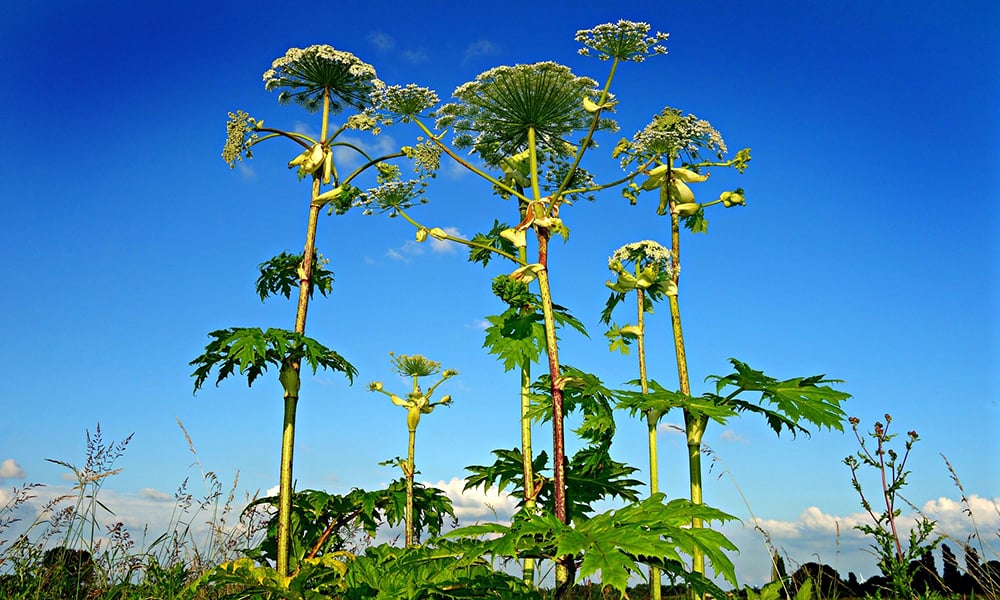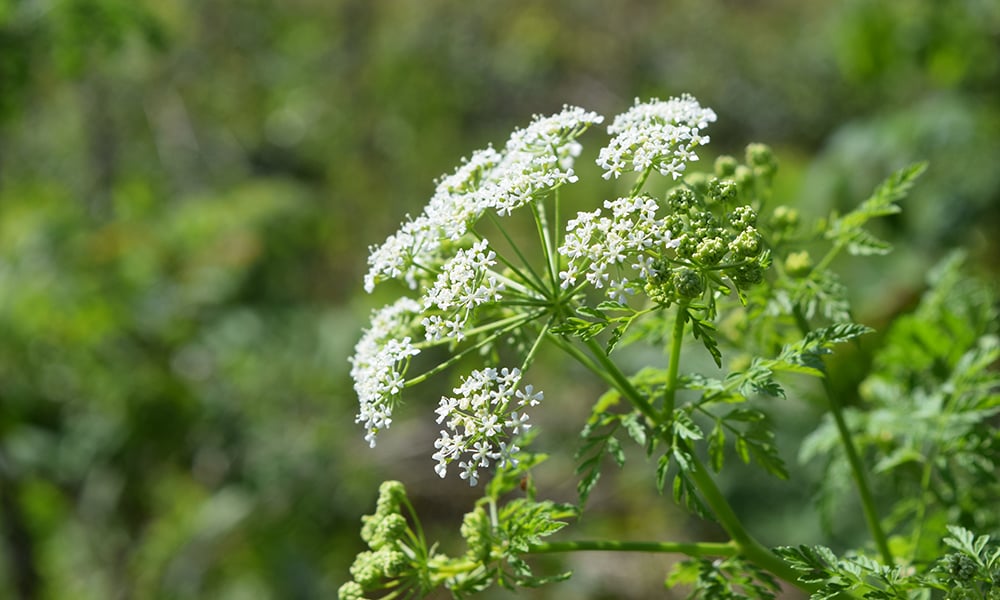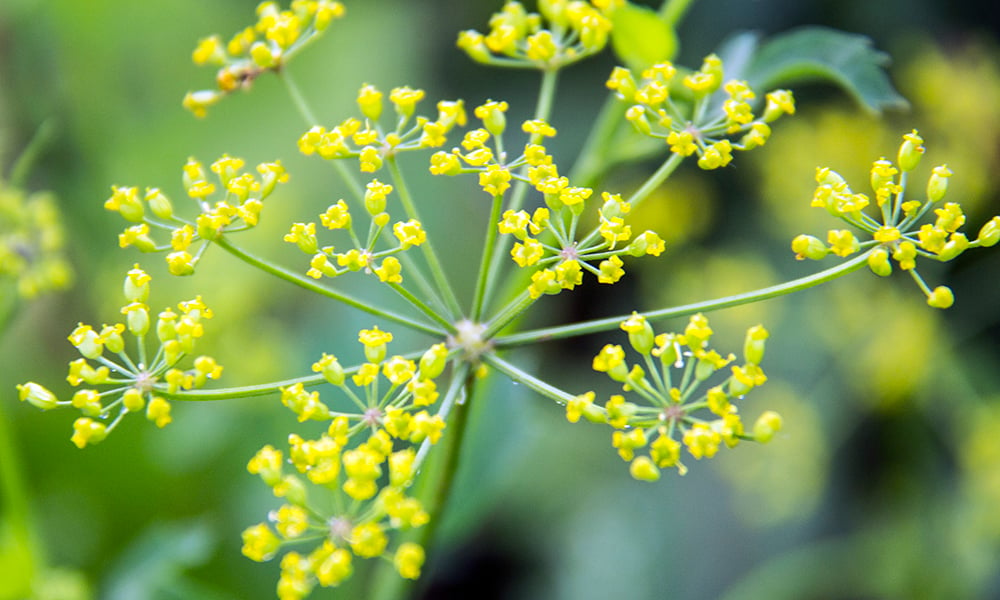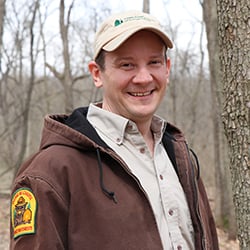
Many plants have amazing adaptations that protect them from being eaten or destroyed by other organisms. That’s good for them but can be bad for people who come in contact with them.
One botanical family in particular — the Apiaceae or parsley family — includes several species that can be harmful to humans and animals.
When the plant’s stems or leaves are broken, they produce a clear sap that can cause burning or blistering when it touches your skin and is exposed to sunlight. The sap of some of these plants has been known to cause blindness, and some can even be deadly if ingested.
The good news is that plants in the Apiaceae family are easily identified by their “umbel” shaped flowers. An umbel is a cluster of flowers that resembles an umbrella’s spokes.
It’s best to avoid these plants whenever possible, but if you can’t avoid them, make sure to wear protective clothing, gloves and safety glasses when you come in contact with them.
Here’s a look at a few of the species that can be found in the DuPage forest preserves.
Giant Hogweed (Heracleum mantegazzianum)
Giant hogweed is native to Asia. Though rare, it has been spotted in the DuPage forest preserves. Our natural resources crews treat it with herbicide when they encounter it.
Aptly named, giant hogweed can grow up to 6 feet tall or taller. Some of the largest specimens have measured up to 18 feet tall! Its stems are thick (2 to 4 inches in diameter) and hollow with ridges and purple spots. Giant hogweed’s flowers, which appear from mid-May to July, are white and clusters can be up to 2 feet, 6 inches across. A single giant hogweed plant can produce up to 20,000 seeds, making it quite prolific.

Giant Hogweed (Heracleum mantegazzianum) Image by Mabel Amber from Pixabay
Cow Parsnip (Heracleum maximum)
Cow parsnip is a native woodland species in DuPage County that can be confused with giant hogweed. It, too, can get rather large as it grows 4 to 10 feet tall. Its stems are not as stocky as hogweed’s and are fuzzy and grooved. Its flowers are five-petaled, and its clusters are not as large as the hogweed’s — its umbels measure only about 6 to 8 inches across. Another distinction: cow parsnip’s outer flowers have more deeply divided petals of unequal size.
.jpg?width=1000&name=Heracleum%20maximum%20(cow%20parsnip).jpg)
Cow Parsnip (Heracleum maximum)
Poison Hemlock (Conium maculatum)
Poison hemlock is native to Europe, Africa and Asia. Its probably one of DuPage County’s most poisonous plants. It grows throughout the county, mostly in sunny degraded areas. It’s on the Ilinois Exotic Weed Act, which restricts landowners from growing, distributing or selling it without a special permit. This species is also controlled and removed by the Forest Preserve District’s natural resources crews.
The entire poison hemlock plant is highly toxic to people and animals. Even its dead stalks can be harmful for up to three years. Poison hemlock usually grows 3 to 8 feet tall and has hairless hollow stems with ridges and purple spots. Its flower is a large cluster of five-petaled flowers in a loose umbrella (umbel) shape.

Poison Hemlock (Conium maculatum) Image by Djtanng from Wikimedia
Water Hemlock (Cicuta maculata)
Water hemlock is a native species to DuPage County that plays an important part of our native wetland ecosystems. This plant can grow 3 to 6 feet tall and has stems that are smooth and hollow. Its stems can vary in color and pattern. They can be solid green or purple to green with purple spots or stripes. The flowers have five white petals in spaced out clusters forming the umbel.
.jpg?width=1000&name=Cicuta%20maculata%20(water%20hemlock).jpg)
Water Hemlock (Cicuta maculata) Image by Williammehlhorn at English Wikipedia
Wild Parsnip (Pastinaca sativa)
Wild Parsnip is native to Asia and Europe. Unlike the previous species mentioned, it has yellow flowers instead of white. The flowers, however, still have an umbrellalike look. Wild parsnip can have the same skin irritating effects as well. Wild parsnip tends to grow in open fields and prairies. It can grow 2 to 5 feet tall, and its stems are smooth with ridges. The yellow flower umbels can be 3 to 8 inches across. This species is managed and controlled by the Forest Preserve’s natural resources crews in many of the preserves where it’s found.

Wild Parsnip (Pastinaca sativa)
The next time you’re out enjoying the preserves, keep these plants in mind. If you plan to walk on any narrow trails or into areas where you might brush up against plants, be sure to wear long pants and sleeves and closed-toe shoes to avoid getting any type of skin irritation from these plants.
See related blog: Get to Know Nature’s Nasties
Dave Andrusyk
